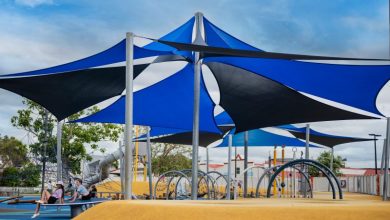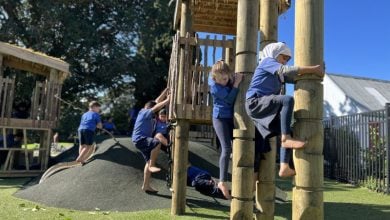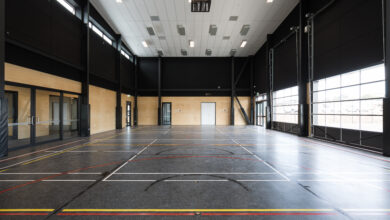Designing acoustics for optimum learning
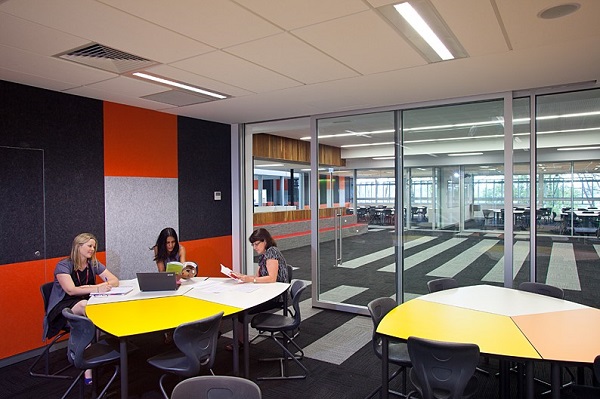
With the rise of large open plan modern learning spaces, a focus on acoustics is paramount. School News spoke with Glen Anderson, design manager at Lotus Folding Walls & Doors, about important considerations for acoustic design in learning environments.
In a journal article titled ‘Classroom Acoustics for Children’ published in Language Speech and Hearing Services in Schools, researchers reported that “adult-like performance on perception tasks in noise or reverberation is generally not reached until the child reaches approximately 13–15 years of age”.
Developing children therefore require an optimised acoustical environment to fully absorb the instruction of the teachers, take in audio-visual content and participate fully in class discussions.
School News: What special considerations are required for designing acoustics in a learning space?
Glen Anderson: There are three distinct methods for managing noise: absorption, for managing the reverberation; insulation for the attenuation (or control) of sound travelling between spaces; and diffusion to scatter the sound. All three methods are assessed based on the function of the space. For example, is it for multi-media presentation, or as a student home room, or a collaborative incubator, or an area to carry out investigation?
SN: What about a multi-functional space such as a gymnasium or school hall?
GA: The build characteristics of this type of space (large, open, hard and reflective surfaces), introduce moderate to high reverberation issues. The sound bounces off surfaces and around the space. AS/NZS 2107-2000 recommends the design sound levels and reverberation times for building interiors depending on their architectural function. For example, the desirable mid-frequency reverberation time for a gymnasium space that is fully occupied should be no more than 2.0 seconds. The high tolerance for raised levels of sound by the users in this space can allow for this long delay time.
SN: What is required to control noise carrying between classrooms?
GA: Meeting the performance requirements for noise separation between rooms is captured in AS/NZS1276.1:1999 and is the weighted level difference [Dw]. This is a single number rating that relates to the difference in sound level between adjacent rooms. If an operable wall or large format slider is used to open up the space, then this too must meet the specified performance requirements.
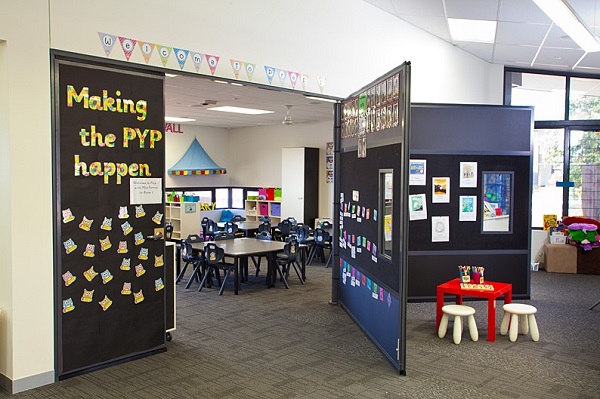
SN: What should schools consider about acoustics, prior to planning new spaces?
GA: The locality of the build and the sounds being generated nearby, (road, rail, aircraft or even rain) need to be considered for acoustic treatment. The design of the building envelope and the internal construction will need to manage unwanted external sound entering the building. It will also need to manage noise generated intermittently by mechanical services, all of which can create sound that may become obtrusive enough to distract. It’s not just the outside sound entering the building, sound will travel between adjacent rooms, so try to avoid having rooms adjoining that will have excessive noise level differences.
SN: Innovative Learning Spaces: how to design acoustics to support these functions?
GA: Learning spaces evolve with shifts in pedagogy, so learning spaces need flexibility to meet future demands and accommodate any number of ‘functions’. Zone areas according to activity: for quiet communication, select quieter parts of the building, and for privacy, position near zones with a higher background noise to help mask private conversations.
The acoustic design should support the performance requirements, including the reverb time required to suit the function of the space, and to avoid unwanted acoustics like uneven focusing of sound or flutter echoes that may disrupt speech intelligibility. There are several standards that will recommend the attenuation, reverb times and sound levels best suited for the function of the space.
SN: What can be used to enhance and achieve desired acoustical outcomes?
GA: Architects and acoustic consultants have various materials and products they employ in achieving desired acoustical outcomes. From sound-absorbing wall and ceiling panels, free standing sound absorption shapes, ceiling baffles to features as simple as furniture, carpets and curtains – all these can manage the acoustics.
‘Sound masking’ technology adds a low level of unobtrusive background sound to the space, protecting confidentiality and reducing distraction by lowering the intelligibility of speech.
Windows can be designed to manage sound transmission, either through double glazing with a large air gap between panes or using laminated glass that has a special acoustic interlayer.
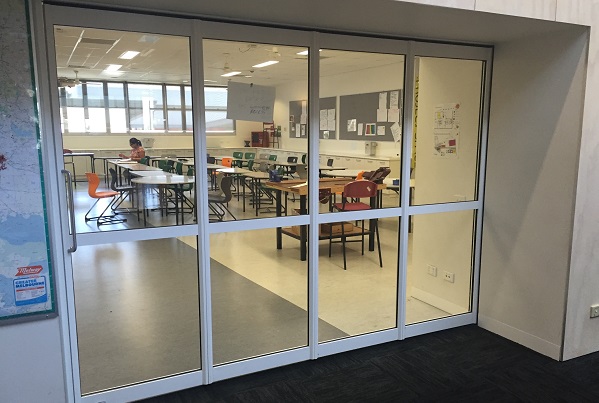
SN: How to improve/maintain acoustics in spaces that are not in good shape acoustically?
GA: We have all been to that very noisy restaurant where we have had to raise our voices to communicate, often due to the hard, reflective surfaces, where excessive reverberation and echo create poor audibility, enforcing elevated sound levels. This involuntary tendency to increase the volume of your voice in response to a noisy back ground is called the Lombard Effect. Wall panels or free standing shapes that have a good noise reduction coefficient [NRC value] easily addresses this issue.
SN: What is different about designing the acoustics for rooms primarily for speech?
GA: A room primarily for speech, like a meeting room where privacy is important, should be situated so there is ambient background noise outside the room to help mask conversation. For a meeting room, a reverb time of about 0.7 seconds is advised and around 25 percent of the wall surface should be in sound absorbent material. With video / teleconferencing, reducing the reverb delay might need to be considered.



